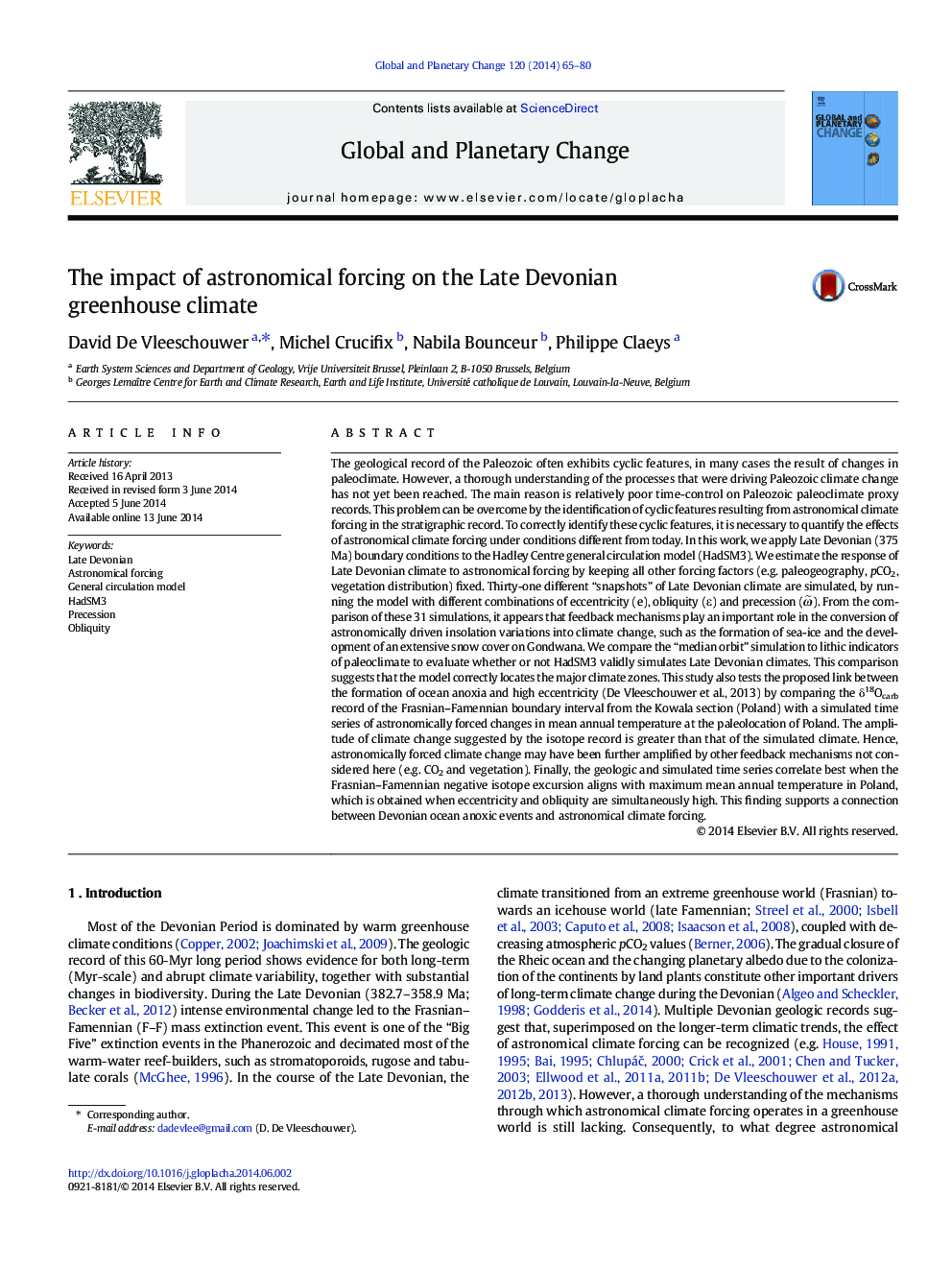| کد مقاله | کد نشریه | سال انتشار | مقاله انگلیسی | نسخه تمام متن |
|---|---|---|---|---|
| 4463412 | 1621661 | 2014 | 16 صفحه PDF | دانلود رایگان |
• Application of a general circulation model to represent Late Devonian climates
• First-order estimate of Late Devonian climate response to astronomical forcing
• Use of model simulations to better interpret cyclic features in the geologic record
• A link between ocean anoxia and simultaneously high eccentricity and obliquity
The geological record of the Paleozoic often exhibits cyclic features, in many cases the result of changes in paleoclimate. However, a thorough understanding of the processes that were driving Paleozoic climate change has not yet been reached. The main reason is relatively poor time-control on Paleozoic paleoclimate proxy records. This problem can be overcome by the identification of cyclic features resulting from astronomical climate forcing in the stratigraphic record. To correctly identify these cyclic features, it is necessary to quantify the effects of astronomical climate forcing under conditions different from today. In this work, we apply Late Devonian (375 Ma) boundary conditions to the Hadley Centre general circulation model (HadSM3). We estimate the response of Late Devonian climate to astronomical forcing by keeping all other forcing factors (e.g. paleogeography, pCO2, vegetation distribution) fixed. Thirty-one different “snapshots” of Late Devonian climate are simulated, by running the model with different combinations of eccentricity (e), obliquity (ε) and precession (ω˜). From the comparison of these 31 simulations, it appears that feedback mechanisms play an important role in the conversion of astronomically driven insolation variations into climate change, such as the formation of sea-ice and the development of an extensive snow cover on Gondwana. We compare the “median orbit” simulation to lithic indicators of paleoclimate to evaluate whether or not HadSM3 validly simulates Late Devonian climates. This comparison suggests that the model correctly locates the major climate zones. This study also tests the proposed link between the formation of ocean anoxia and high eccentricity (De Vleeschouwer et al., 2013) by comparing the δ18Ocarb record of the Frasnian–Famennian boundary interval from the Kowala section (Poland) with a simulated time series of astronomically forced changes in mean annual temperature at the paleolocation of Poland. The amplitude of climate change suggested by the isotope record is greater than that of the simulated climate. Hence, astronomically forced climate change may have been further amplified by other feedback mechanisms not considered here (e.g. CO2 and vegetation). Finally, the geologic and simulated time series correlate best when the Frasnian–Famennian negative isotope excursion aligns with maximum mean annual temperature in Poland, which is obtained when eccentricity and obliquity are simultaneously high. This finding supports a connection between Devonian ocean anoxic events and astronomical climate forcing.
Journal: Global and Planetary Change - Volume 120, September 2014, Pages 65–80
